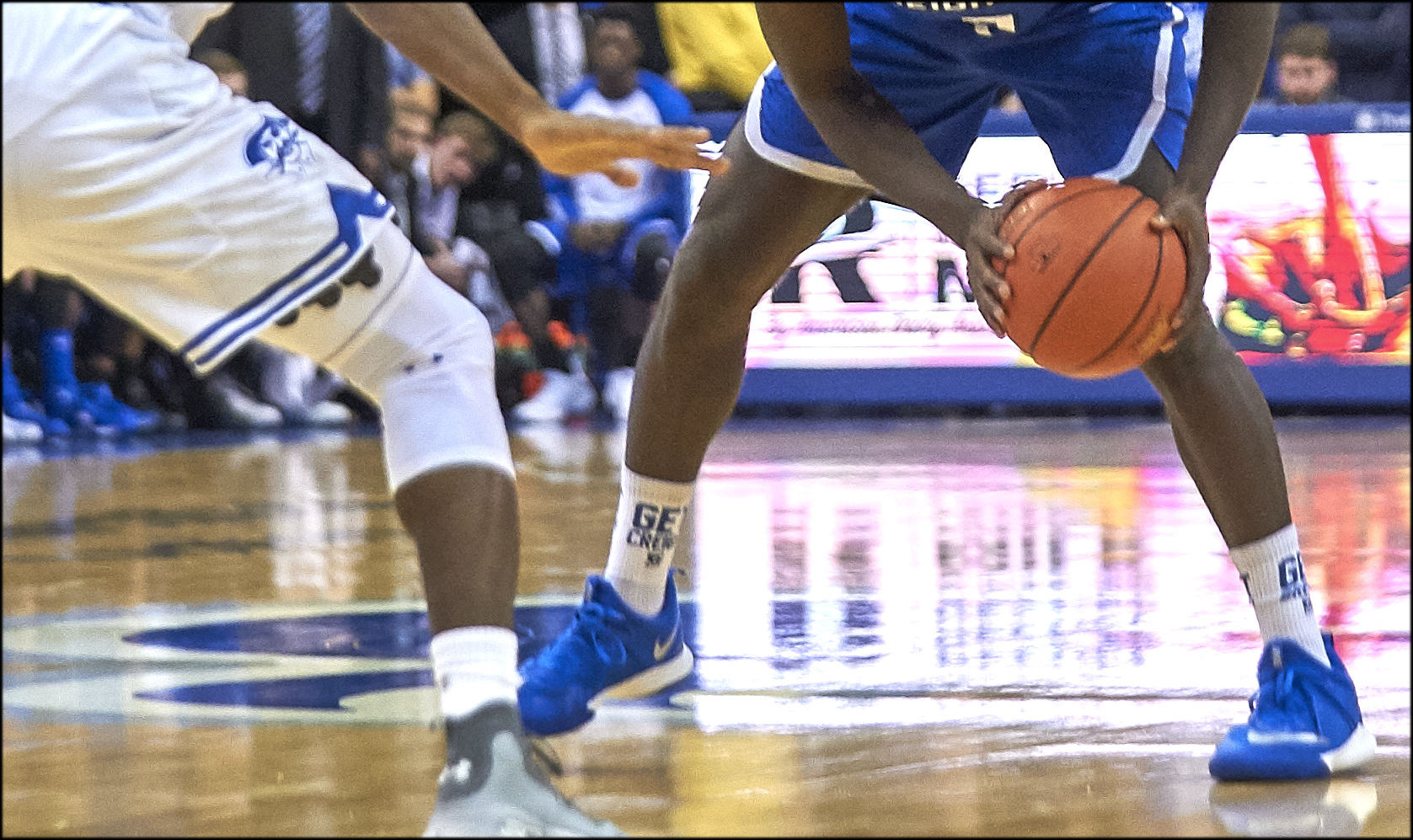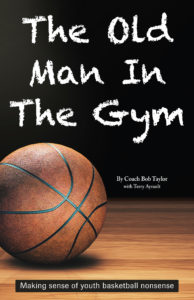Jump Stops, Pivots, and V-Cuts
Having coached basketball at every level since 1970, including 21 years in the NBA, I always started with stops, starts, pivots, and v-cuts with every team I worked with.
In presenting at coaches and player clinics since retiring from the NBA, I always demonstrate and teach footwork to start the clinic. It’s my contention that if a player cannot stop on balance, then shooting becomes more difficult. Therefore, the first thing I teach is the concept of balance.
 The players line side-by-side and are instructed to put their feet together with their arms hanging by their sides. Next, they are to move their head forward, backward, and sideways. It’s obvious when their head moves forward they are off-balance — and the same can be said for backward and sideways. The head controls the body, and if you study the great shooters in the league, their head stays still when shooting with their eyes fixed on the target. Then, I instruct the players to place their feet shoulder-width apart, right foot slightly ahead (the opposite for left-hand dominant players). Their arms should be close to the body and bent at the elbow with their chest held high and their hands facing out.
The players line side-by-side and are instructed to put their feet together with their arms hanging by their sides. Next, they are to move their head forward, backward, and sideways. It’s obvious when their head moves forward they are off-balance — and the same can be said for backward and sideways. The head controls the body, and if you study the great shooters in the league, their head stays still when shooting with their eyes fixed on the target. Then, I instruct the players to place their feet shoulder-width apart, right foot slightly ahead (the opposite for left-hand dominant players). Their arms should be close to the body and bent at the elbow with their chest held high and their hands facing out.
Instruct them to move their head again and it’s obvious that they have better balance in what I call the basketball stance — head up, chest out, butt down, knees bent, arms bent, chest high, and hands held at the 90-degree angle.
This might seem elementary to a lot of coaches, but having had the opportunity of going to hundreds of practices and games as the player personnel director for the Cavaliers and Clippers, I think it is very important to be successful in developing your team play at a high level on both ends of the floor.
Once balance is established, I go into jump shots. When demonstrating the jump shot you want to display landing on the balls of the feet, getting the butt to drop down, and keeping the head and chest up. The head must stay centered at the midline of the body. It’s a little bunny hop with the feet landing on the floor as quickly as possible. I describe the chest as “King Kong” and the head as “Up Periscope.” In order to be a successful shooter, you must stop with a solid base and balance. How many times have you seen a player sprint down the court and get a shot and not be in balance? It’s very important to get stopped — depending on the level slowly begin incorporating this concept. The ability to control your body is paramount to improvement.
Next, we transition to pivots. Whether it’s forward or reverse, pivots are instrumental in playing basketball the correct way. Rebounding with block-outs, outlet passes, running lanes to shoot, coming off screens, rolling off screens, spin dribbles, post play, wing play, defense, quarter turns, slides, if a defender is off-balance they have difficulty guarding the dribbler.
In teaching pivots, I always have right-handed players, in the beginning, use their left foot as the pivot foot and vice versa for left-handers. One of the obvious reasons is it is easier as a right-hander to shoot off the left foot and vice versa. It’s better to do one skill 25 times than 25 kills one time. Using the left foot set up Adrian Dantley in one-on-one moves.
I divide the pivot like a pie, four quarters teaching the forward pivot calling out 1,2,3,4. I stress having elbows out, the ball on the shooting side, and keeping the head level so the body doesn’t go up and down. If you stand up, players need to get back down to shoot or make one-on-one moves. Tell them there is an electric wire over their head and they must not bob up and hit the wire.
» ALSO SEE: A.D.ministration — Limiting Problems by Effectively Communicating with Parents
Once the callout gets to 4, the players are back to where they started — facing the coach. Then teach reverse pivot, calling out 4,3,2,1. Again, elbows should be out, pivot on the same plane, keep the head up and use the off-foot and leg to drive themselves so they can pivot with quickness.
From the pivots, then transition back to jump stops and combine them with pivot drills. Have the players run backward, stopping on balance to be in a position to play defense, quarter turns, and slides on balance so they can defend the dribbler or break on a pass for a steal. Always emphasizing seeing the ball. This is a teaching point, particularly for younger players. They tend to hold the ball in front of their body. With the ball, it is very obvious for the defender to take the ball. The ball must be held on the side of their body with their elbows out to protect the ball, resulting in a much stronger position for holding it. This gives more momentum on the pivot and results in a quicker shot since the ball is on the side they shoot.
The last things that should be taught are v-cuts with both feet, which are imperative in setting up the defender to make cuts to the basket, using screens, getting open on offense, and also stunting on defense. Stress making a hard jab-step to get the defender to go in one direction while the player changes to another direction. I have a saying, “never go where you want to go on offense first.”
Once jump stops and pivots are satisfactory I will have players dribble the ball and work on the same beginning drills with the ball — jump stopping, pivots, and v-cuts.
I never let my team walk off the court after a drill. They must jump stop and pivot and see the ball. To build winning habits you must be consistent. Coaching takes a lot of work, but it’s very satisfying to see your players and team improve to be successful.












